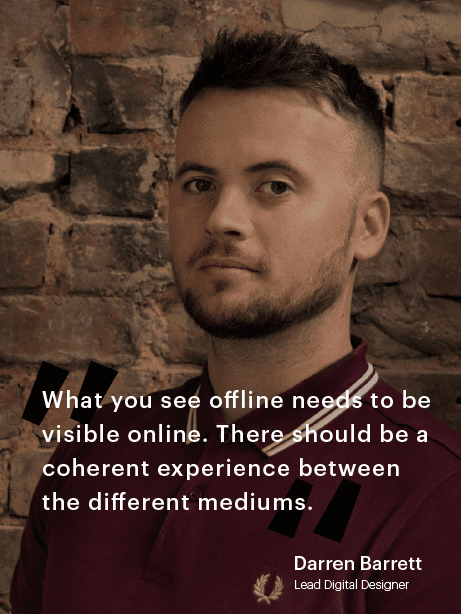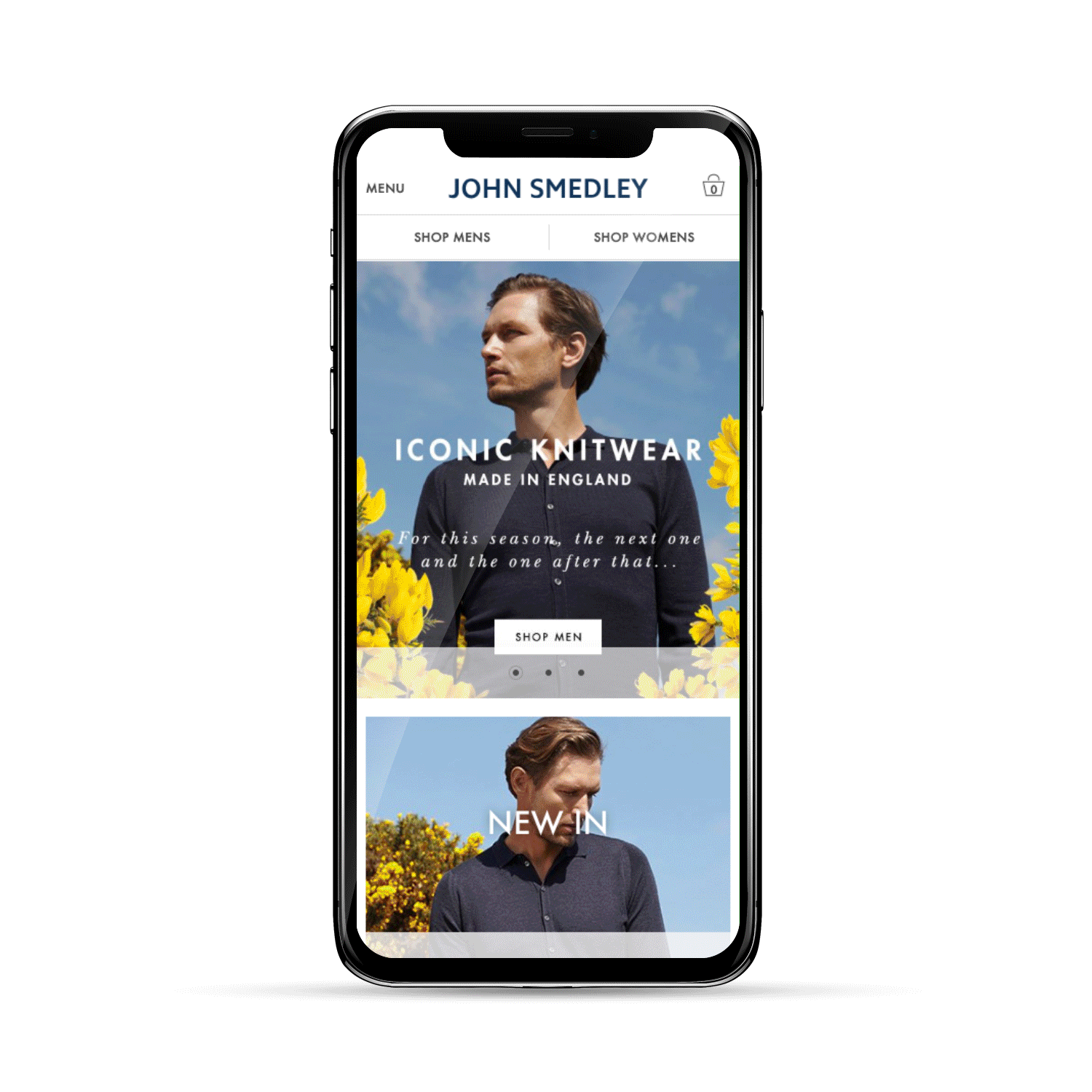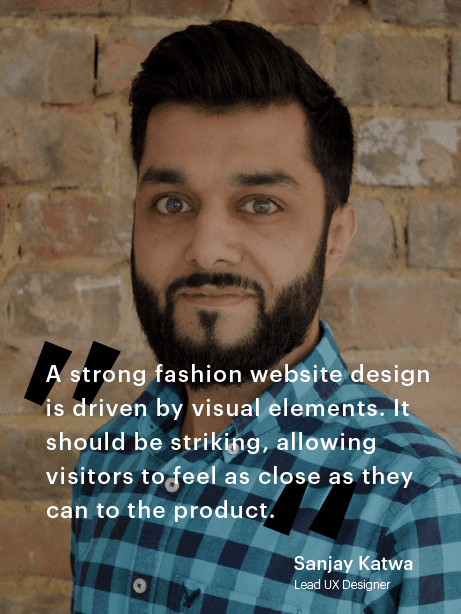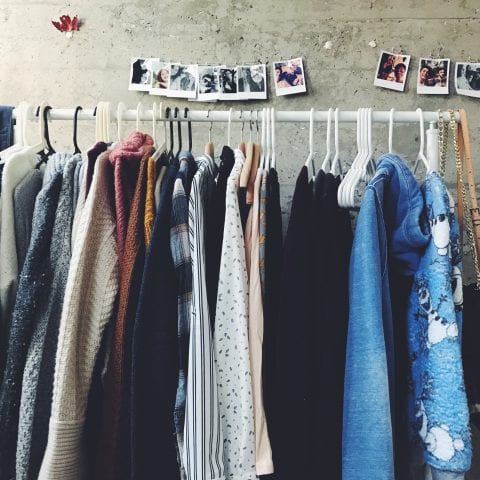What are the key drivers?
A good fashion website should be very product heavy, according to Un.titled’s UX Designer Sanjay Katwa. This is to help make the products on show as tangible as possible for site visitors.
“In my mind, a strong fashion website design is driven by visual elements,” Sanjay says. “It should be striking, allowing visitors to feel as close as they can to the product to then convert. The product must be made as tangible as possible, and there are numerous ways to help achieve this.”
Features such as video help to provide a dynamic, engaging experience for shoppers that goes beyond typical purchasing information.
“For fashion sites, it’s more about inspiring a purchasing decision rather than informing,” explains Darren. “What you see offline for fashion brands needs to be visible online. There should be a coherent experience across the different mediums.”

What’s the shopper thinking?

There is also an opportunity to tap into the psychology of shoppers by zoning in on what questions they might be asking themselves as they view your site.
“Fashion sites can be viewed as somewhat aspirational,” says Sanjay. “Shoppers may think to themselves ‘I want to wear that’ when viewing a product, but they will then want to know ‘will that suit me’, ‘what might that go well with’, ‘is it available in my size’ and other questions. This process can differ from customer to customer, but having inspiration and aspiration as core tenets and melding this with user needs can help brands strike the perfect balance.”
Carrying out exercises focusing on pinning down the various types of customer can help support this. User engagement workshops are a great way to flesh out the type of customer that brands are aiming to acquire or maintain.
“While certain factors are fairly universal when it comes to designing for fashion brands, the reality is the audience can differ between brands,” Darren says. “Some may be targeting high-end shoppers. Some may be looking to cater for more mainstream shoppers. Brands can examine and analyse their existing audience, and potentially pinpoint areas of growth. This is where user engagement workshops can be very helpful.”
Sticking to the main principles
Given that most fashion websites will also be ecommerce websites, there remains a need to be usable and navigable.
“Fashion sites are still ecommerce websites, so the main principles around subjects such as usability and navigation still apply,” says Sanjay. “This extends to elements such as conversion, with offers, incentives and customer value propositions all providing customers with additional reasons to shop with your store.”

Un.titled has worked with numerous fashion brands to help them achieve more online using platform such as Shopify.
Take a look at our work with John Smedley, who we worked with to create a responsive Magento ecommerce website. Our team has also created a socially-driven responsive site for Clarks Original.
Got a fashion ecommerce website design project in mind? Get in touch with the Un.titled team.





